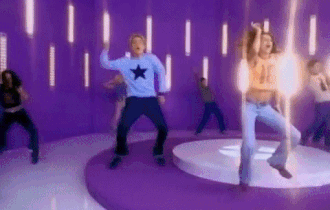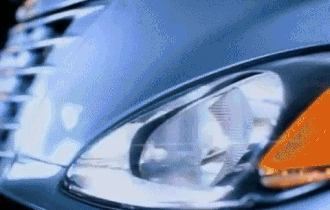Released: 14th May 2001
Writers: Gustav Jonsson / Marcus Sepehrmanesh / Tommy Tysper
Peak position: #10
Chart run: 10-17-21-31-47-57-72
Billboard Hot 100 chart run: 93-93-100
The A*Teens are a fascinating case of a pop act who only ever enjoyed limited success in the UK and – for all intents and purposes – would be considered little more than a footnote of the ‘90s in relation to the resurgence in ABBA’s popularity. However, looking beyond our shores, the A*Teens enjoyed a healthy career spanning five years, three-and-a-half albums and a greatest hits compilation. Following their debut, the group rapidly shed their origins as an ABBA tribute act to deliver some brilliant pop songs. Yet, the UK saw only a glimpse of their brilliance, which Upside Down is a perfect example of.

Having toured extensively in support of The ABBA Generation, the A*Teens had garnered success in America and created a platform from which they could launch a follow-up. Conveniently this also coincided with the chart dominance of Cheiron Studios; as such, the A*Teens were perfectly primed to take advantage of this piqued interest in Swedepop. For their second album, Teen Spirit, the group weren’t going to rely on another collection of ABBA covers. Instead, they planned to make waves (and an identity) of their own. In that respect Upside Down was the perfect song to open phase two of the group’s career.

The thing that worked about the A*Teens post-The ABBA Generation was that almost everything they recorded had a consistent authenticity that evaded many other acts. Upside Down feels precisely like the sort of a song a quartet of teenagers would be singing; it’s written in such a way that even where its lyrics feel a bit corny, they’re delivered with an exuberance and energy that sells them beyond doubt. In many ways, this is the age-old tale of a high school crush, but with a charming degree of detail to the lyrics: “My grades are down from A’s to D’s, I’m way behind in history”. The exposition goes to such extremes that this is (probably) the only pop song from the ‘90s/’00s – if not ever – to reference Peter the Great: “My teacher says to concentrate, so what his name was Peter the Great”. Although it’s probably a good thing the A*Teens weren’t paying attention in class so that Upside Down can skim over the finer details of Peter and his death from a gangrenous bladder.

Upside Down flirts with elements of production that would be much more prominent in later material but does less with them here. The intro, for example, has a robotic: “Upside down” vocal sample and uses it just once. That same gimmick would be used again – far more prominently – on the A*Teens’ 2002 hit Floorfiller. Indeed, the intro is a bit disjointed from the rest of the song altogether. The first 12 seconds of the track hint at a pounding electro-pop anthem and then switch into something more straightforward. The same elements are revisited after the middle-eight but remain largely inconsequential to the end product. It’s not a major distraction, but an aspect of Upside Down that feels – in hindsight – ever so slightly formative given the A*Teens‘ evolution.

One thing that’s never in question is how much joy the track exudes; this is feelgood pop music at its finest. It may tell of unrequited love but rather than being melodramatic and angsty, Upside Down captures the euphoria associated with that feeling: it’s zany, goofy and brimming with optimism. Plus there’s a towering key-change that is among the most ludicrously exhilarating of the ‘00s. Few tracks capture the pure shininess of the early-’00s quite so giddily. So effervescent is Upside Down that it just about gets away with something many songs cannot: forced laughter. As the “Somehow, someway, you will love me too…” middle-eight concludes, Marie Serneholt and Sara Lumholdt descend into shrieky laughter. Usually it’s an incredibly off-putting gimmick, but here it’s tolerably brief, playing directly into the cheeky, rebellious Teen Spirit persona. The track would still be just as good without it, though.

What’s clear from the music video for Upside Down is how much the A*Teens were being marketed towards America. The single is a great example of the group’s consistently slick and polished visuals, a standard they largely maintained throughout their career. While relatively loose on narrative, each sequence within the video is flawlessly executed. Many aspects are invariably about as turn-of-the-century as they could be, such as the high frequency of split-screen shots and the colour pallet of garish blue, purple and white. But there are also some neat shots in the video that mess with gravity; and while some merely involve turning the camera at an angle, others employ slightly more complex camera techniques. The result is a video that has a considerable amount of effort and investment behind it, successfully emulating the slick choreography and glossy productions of their pop peers. If the intention was to create something that looked like it belonged on MTV, then it was a runaway success.

The effort that A*Teens put into growing their profile Stateside paid off; Upside Down – or Bouncing Off The Ceiling (Upside Down) – as it was known in America, reached #93 on the Billboard Hot 100 (their biggest hit). Meanwhile, in the UK, the track became the A*Teens’ first and only top ten single. It’s an outcome that seemed relatively unlikely from their debut as a glorified tribute act, yet this is a song that perhaps should have been even bigger, since it seems more fondly remembered than its chart peak would suggest. Either way, as pop music’s love affair with Swedepop exploded at the turn-of-the-century, the A*Teens were doing it better than most and Upside Down was just the tip of the iceberg.



